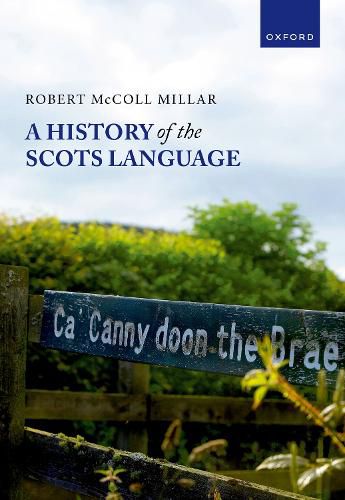Readings Newsletter
Become a Readings Member to make your shopping experience even easier.
Sign in or sign up for free!
You’re not far away from qualifying for FREE standard shipping within Australia
You’ve qualified for FREE standard shipping within Australia
The cart is loading…






This book provides a thorough yet approachable history of the Scots language, a close relative of Standard English with around 1.5 million speakers in Scotland and several thousand in Ireland, according to the 2011 census. Despite the long history of Scots as a language of high literature, it has been somewhat neglected and has often been treated as a dialect of Standard English. In this book, Robert McColl Millar explores both sociolinguistic and structural developments in the history of Scots, bringing together these two threads of analysis to offer a better understanding of linguistic change. The first half of the book tracks the development of Scots from its beginnings to the modern period, while chapters in the second half offer detailed descriptions of Scots historical phonology and morphosyntax, and of the historical development of Scots lexis. A History of the Scots Language will be a valuable resource for undergraduate and graduate students of the modern and historical Scots language, but will also be of interest to those studying the history of English and other Germanic languages.
$9.00 standard shipping within Australia
FREE standard shipping within Australia for orders over $100.00
Express & International shipping calculated at checkout
This book provides a thorough yet approachable history of the Scots language, a close relative of Standard English with around 1.5 million speakers in Scotland and several thousand in Ireland, according to the 2011 census. Despite the long history of Scots as a language of high literature, it has been somewhat neglected and has often been treated as a dialect of Standard English. In this book, Robert McColl Millar explores both sociolinguistic and structural developments in the history of Scots, bringing together these two threads of analysis to offer a better understanding of linguistic change. The first half of the book tracks the development of Scots from its beginnings to the modern period, while chapters in the second half offer detailed descriptions of Scots historical phonology and morphosyntax, and of the historical development of Scots lexis. A History of the Scots Language will be a valuable resource for undergraduate and graduate students of the modern and historical Scots language, but will also be of interest to those studying the history of English and other Germanic languages.